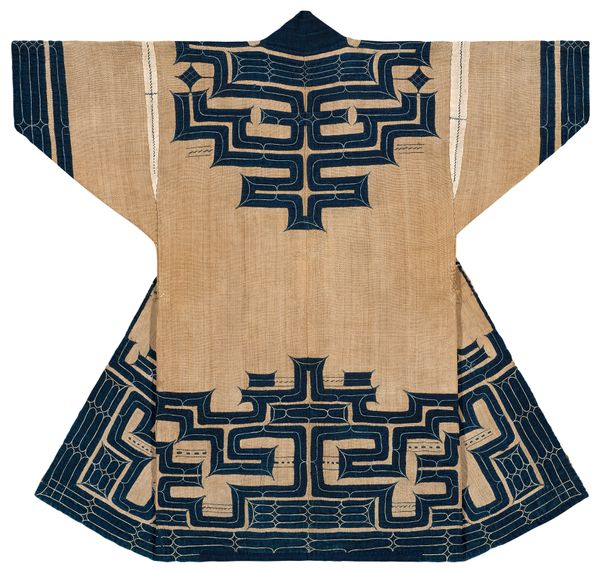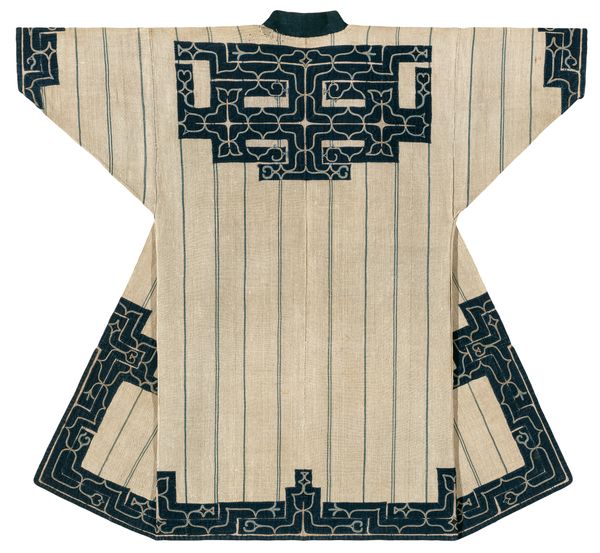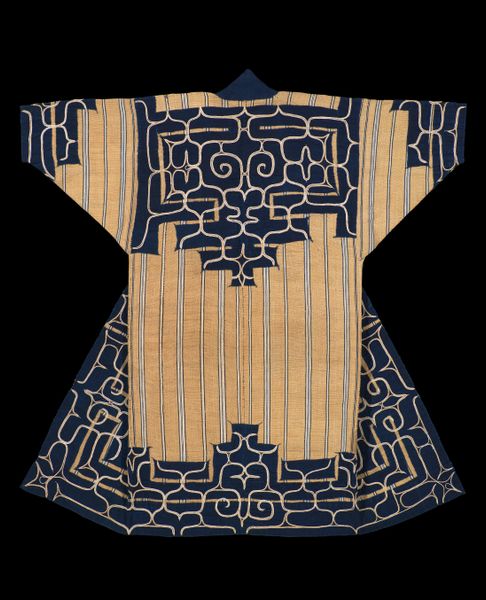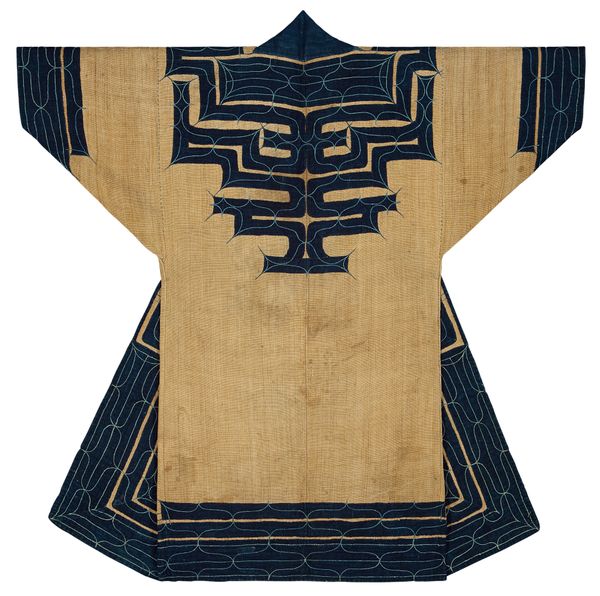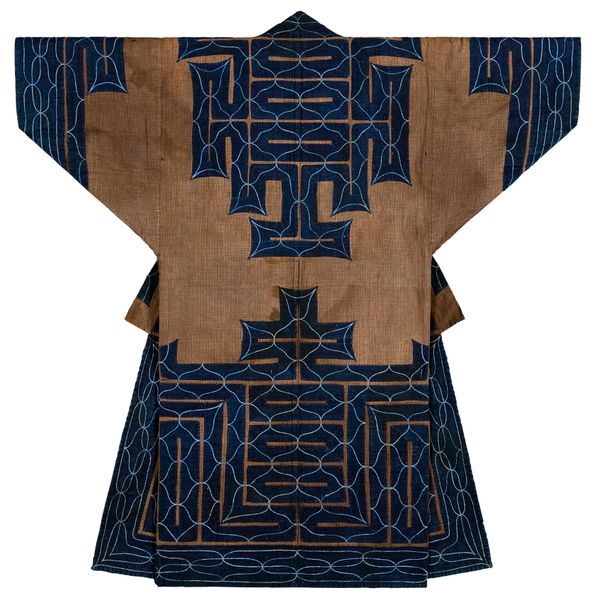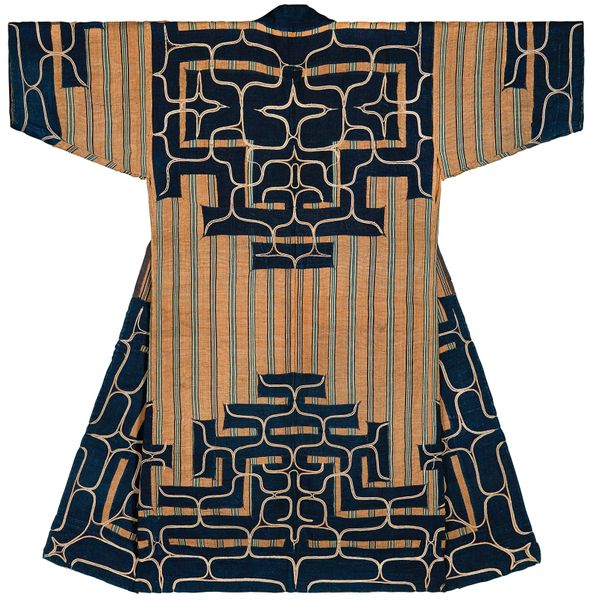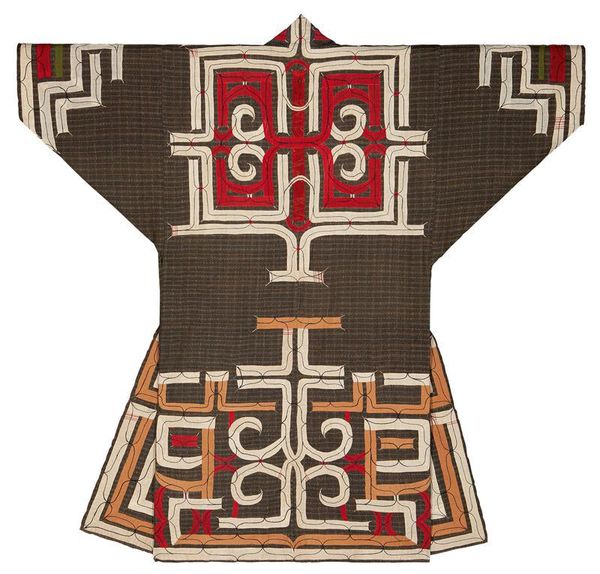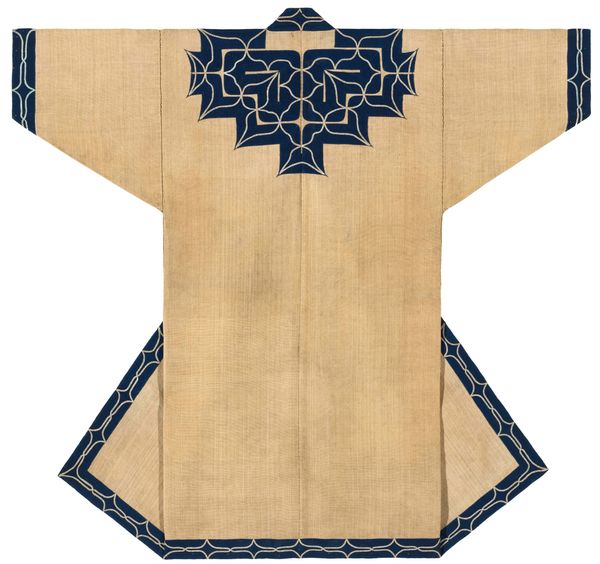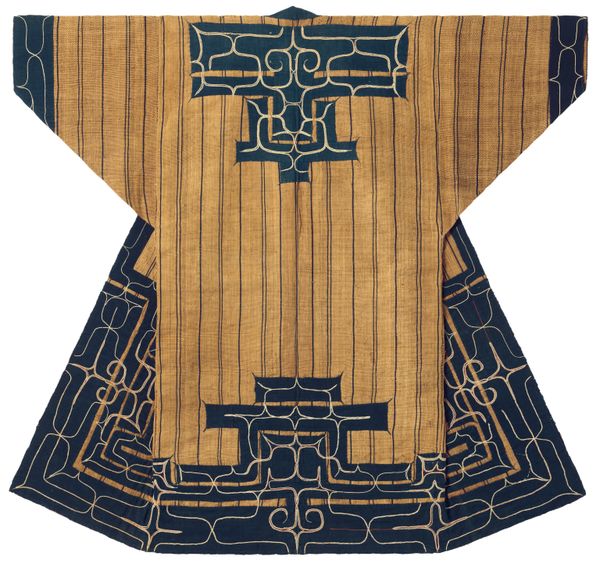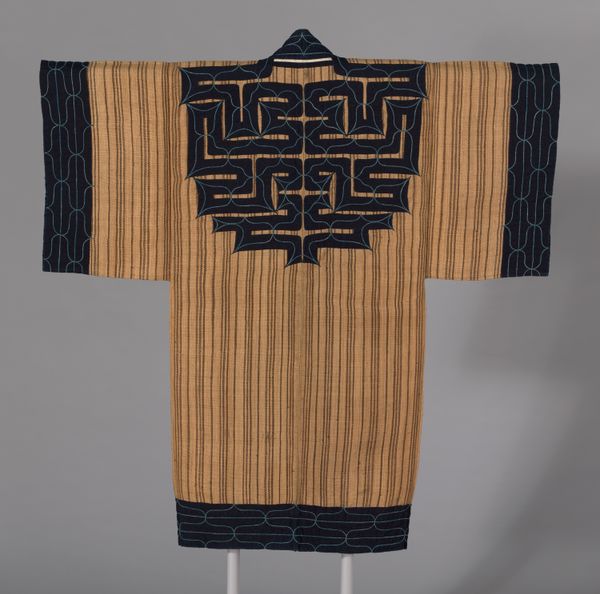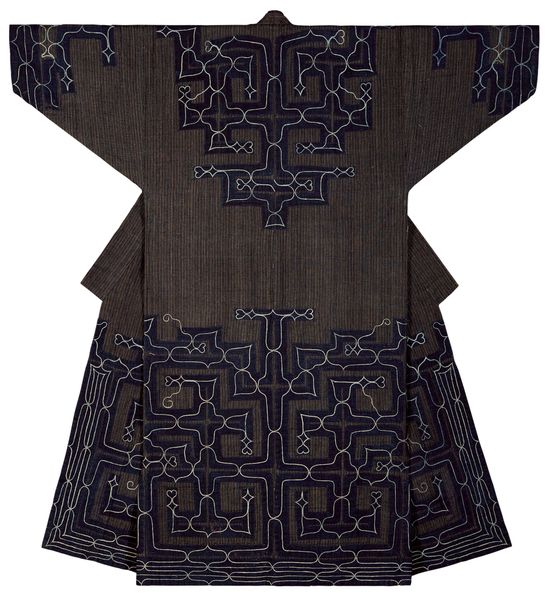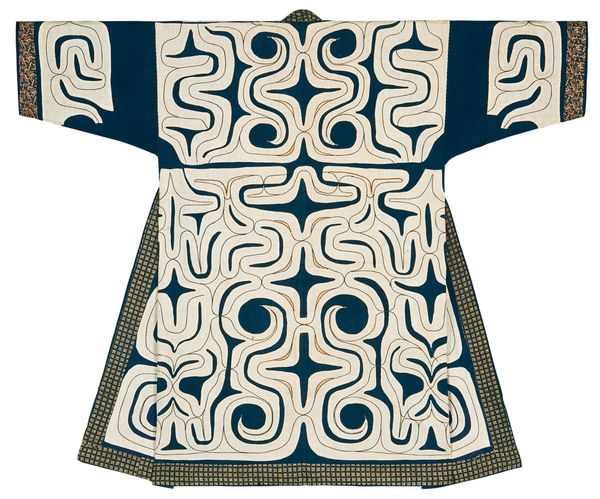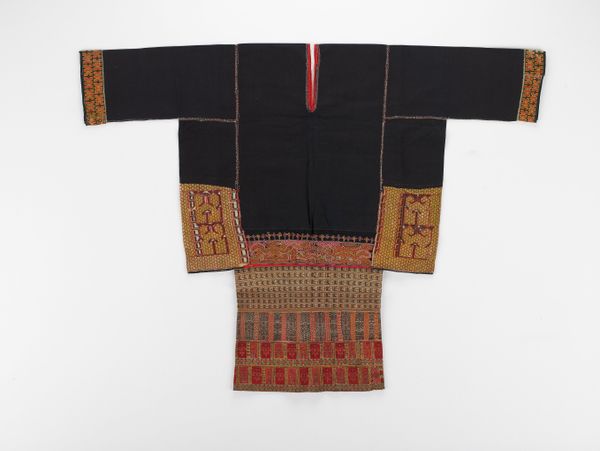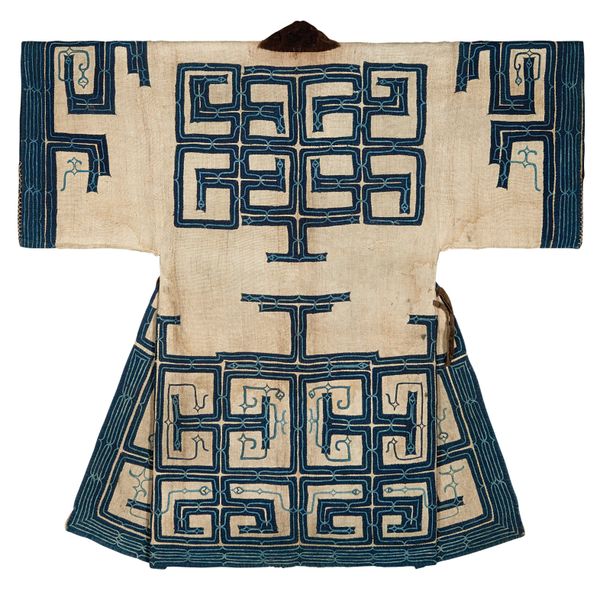
Attush robe with light- and dark-blue stripes late 19th-early 20th century
0:00
0:00
weaving, textile
#
pattern heavy
#
pattern
#
asian-art
#
weaving
#
textile
#
japan
#
form
#
geometric pattern
#
repetitive shape and pattern
#
organic pattern
#
geometric
#
repetition of pattern
#
vertical pattern
#
line
Dimensions: 49 3/4 × 51 in. (126.4 × 129.5 cm)
Copyright: No Known Copyright
Curator: Let's talk about this striking "Attush robe with light- and dark-blue stripes" from the late 19th or early 20th century. It's currently held here at the Minneapolis Institute of Art. Editor: Oh, wow! It reminds me of a vintage road map. There’s something so appealing about these bold graphics, and the palette is really calming, almost like a stormy sky breaking into sunshine. Curator: Absolutely. "Attush" refers to a type of robe created by the Ainu people of Japan. Primarily, these were ceremonial robes traditionally made from elm-bark fiber that was woven and dyed, with patterns applied through resist dyeing techniques. The use of imported cotton cloth is interesting because it represents how materials are constantly adapting through availability, global trading routes, and appropriation. Editor: The geometry feels… both ancient and incredibly modern. I bet someone would buy that today! Knowing it's Ainu, that context shifts the focus, right? Suddenly it is about honoring the past through those techniques, materials, and that hand-done pattern layout across such an unusual ground. Curator: Precisely! And what’s particularly compelling is examining the labor involved. Each stripe, each geometric motif, would be carefully planned and executed, reflecting a profound understanding of textile design and production within Ainu culture and its economic structures. Editor: Thinking of all those little stitches… and how someone decided *that* pattern, *that* placement… you get a feel for the care embedded within the textile, transforming this into something quite monumental, beyond mere clothing. Does it reflect their connection with nature, I wonder, since I notice organic and repetitive geometric elements combined here, perhaps mirroring the Ainu’s perception of their world? Curator: Well, given its probable use in ceremonial contexts, the designs may carry symbolic weight beyond pure decoration, related to specific rituals and community status, reflecting social organization as manifested through attire. Editor: In all honesty, seeing this magnificent robe reminds me that real craft has the capacity to ground us. To have these amazing traditions passed down, to create with purpose, knowing that someone will see you—the creator—when they come across your piece decades, maybe even centuries later, has a unique and comforting feeling, for sure! Curator: Indeed. The robe is not just an object; it embodies cultural continuity and adaptation. Studying this offers a glimpse into how cultures engage with and transform materials through human labor, ultimately revealing complex networks.
Comments
No comments
Be the first to comment and join the conversation on the ultimate creative platform.
